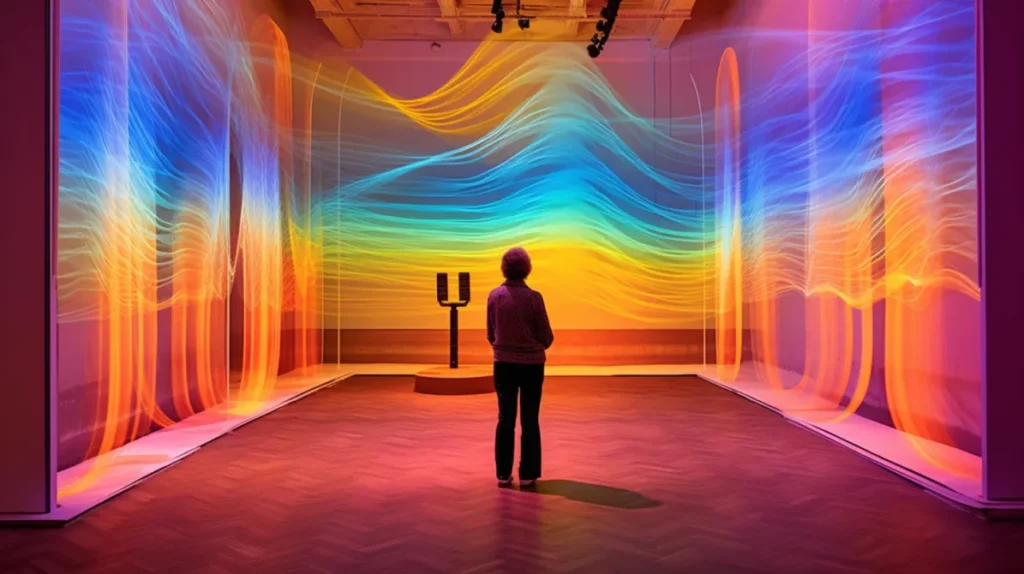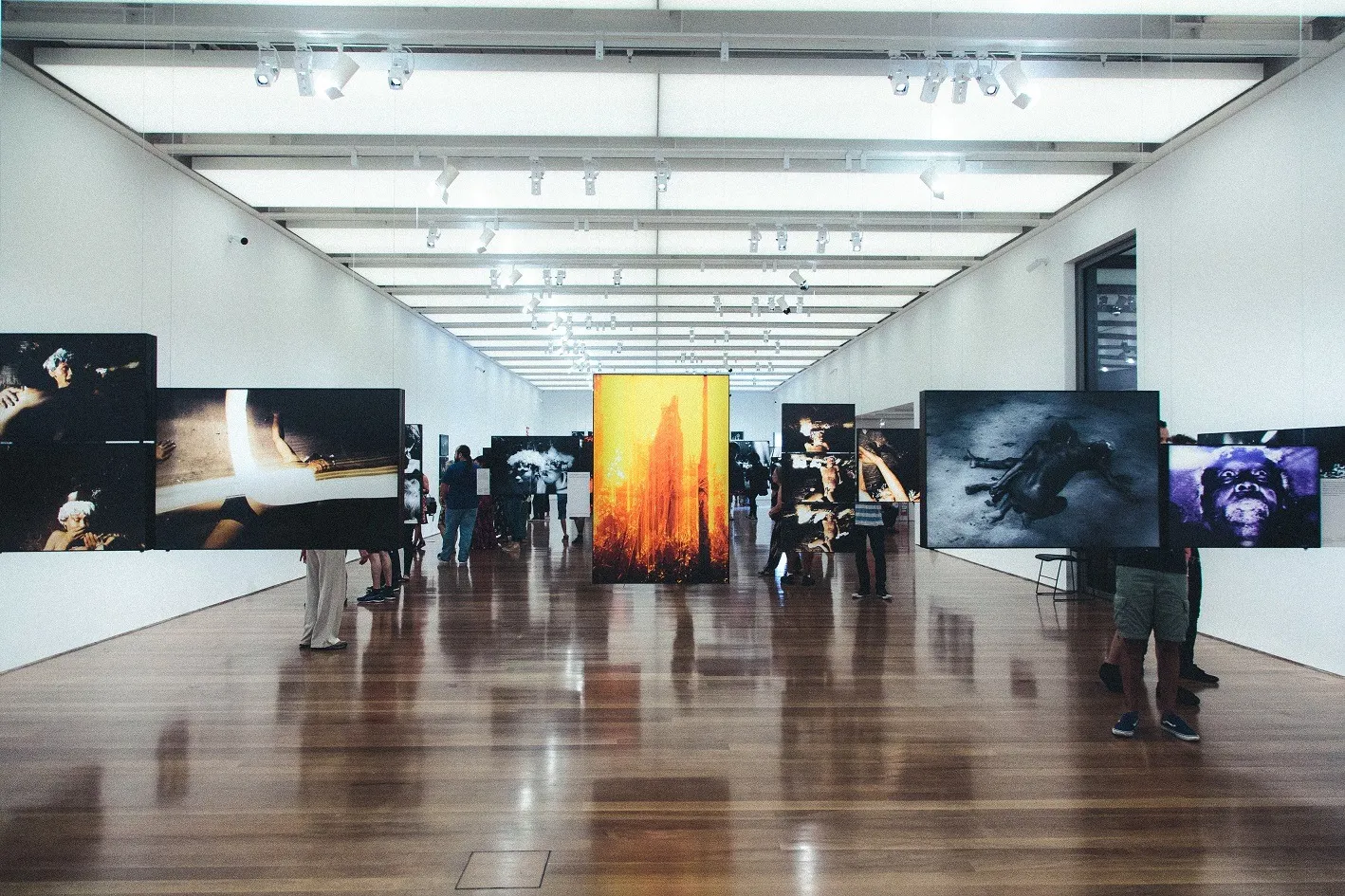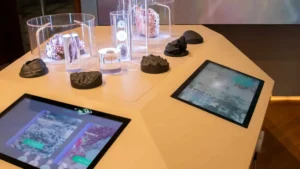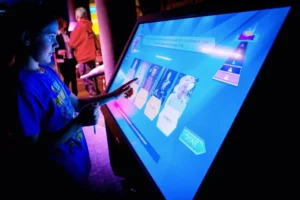Blogs
The Role of AV Systems in Modern Museums and Exhibits
In the age of advanced technology, museums and exhibits are transforming into immersive, interactive spaces that go beyond traditional displays. Audio-visual (AV) systems play a pivotal role in this transformation, enhancing the visitor experience by engaging multiple senses and providing dynamic, informative, and entertaining environments. From interactive exhibits to large-scale digital installations, AV systems are a vital component of modern museum design. This blog explores the role of AV systems in museums and exhibits, the technological advancements that have shaped them, and how these systems contribute to both the functionality and visitor experience of modern museums.
Importance of AV Systems in Museums
AV systems are no longer a luxury but a necessity for contemporary museums and exhibits. They provide the tools needed to create engaging, immersive environments that attract and retain visitors. Here are some reasons why AV systems are crucial:

- Enhancing Visitor Engagement
The traditional static display of artifacts is being replaced by interactive, digital, and multimedia exhibits. AV systems enable museums to incorporate sound, video, and lighting effects into their displays, creating a more engaging experience for visitors.
- Interactive Touchscreens: Visitors can explore digital content at their own pace, enhancing their engagement with the exhibits.
- Digital Audio Guides: These allow visitors to receive curated information through wireless headsets, tailored to their preferences and language.
- Immersive Projections: AV systems enable large-scale projections that transform an exhibit space, bringing historical events or complex concepts to life.
- Creating Immersive Experiences
Immersive exhibits combine AV technology with physical elements to transport visitors to different times, places, or realities. Using projection mapping, 3D sounds, and synchronized visuals, museums can create environments that feel more like a journey rather than a static visit.
- Projection Mapping: This technique projects video or imagery onto surfaces, creating dynamic and interactive experiences.
- 3D Audio: Surround sound systems deliver spatially accurate audio, making the experience more immersive and realistic.
- Providing Dynamic and Informative Displays
AV systems allow for real-time updates and dynamic displays that keep the museum experience fresh and engaging. With AV integration, museums can easily update exhibitions with new content, ensuring that they stay relevant and up to date.
- Dynamic Digital Signage: These can be used for exhibit labels, directions, or important announcements, keeping the museum organized and informative.
- Video Walls: Large video screens or interactive displays can showcase documentaries, video clips, and animations that explain the history and context of the exhibits.
- Expanding the Reach with Remote Access
One of the key aspects of modern museums is their ability to reach global audiences. AV systems, particularly those involving streaming technologies, enable museums to host virtual exhibits, livestream events, and even offer remote guided tours. This expansion beyond physical boundaries enhances accessibility and ensures that audiences worldwide can access the museum’s offerings.
- Live Streaming: Museums can broadcast lectures, performances, or live demonstrations to online audiences.
- Virtual Reality (VR): By combining VR with AV technology, museums can offer virtual tours or experiences of distant or inaccessible exhibits.

Technical Aspects of AV Systems in Museums
Integrating AV systems into a museum requires careful planning and technical expertise. It’s essential that these systems not only deliver high-quality sound and visuals but also operate seamlessly within the museum’s overall design. Here are some key technical components to consider:
- AV Integration
The process of integrating various AV components into the museum’s infrastructure is complex and requires expertise in AV systems design and installation. A seamless integration ensures that the technology enhances the visitor experience without disrupting the aesthetic or functional flow of the museum.
- AV Integration Software: This software allows for centralized control and management of audio-visual devices across the museum, including lighting, sound, and projection systems.
- Customized AV Solutions: Each museum requires a tailored AV system that fits its specific needs, from small exhibits to large, open spaces. This customization can include acoustics design, projection mapping, and interactive installations.
- Audio Equipment
High-quality audio is fundamental to creating immersive and engaging museum experiences. Museums often use a variety of audio equipment such as speakers, microphones, and audio systems to deliver clear, crisp sound that complements the visual elements.
- QSC Audio Products: Known for their high-performance audio systems, these products help museums achieve powerful and precise sound.
- Sennheiser and Harman Kardon: These brands offer industry-leading audio equipment that is perfect for creating rich, immersive soundscapes within museums.
- Visual Systems and Digital Displays
Whether it’s a digital signage system, projection mapping, or a video wall, visual systems are integral to modern museum design. High-quality displays, paired with cutting-edge AV integration, allow museums to provide visitors with an interactive and visually stunning experience.
- Digital Signage: With digital signage, museums can update information in real-time, directing visitors or showcasing exhibit-related content dynamically.
- Video Walls: Large-scale video walls, often made from multiple high-definition displays, provide a visually impactful method of delivering content to visitors.
- Interactive Technology
Interactive exhibits are becoming increasingly popular, allowing visitors to engage directly with the content. Technologies such as touchscreens, motion sensors, and augmented reality (AR) combine with AV systems to deliver a more personalized experience.
- Touchscreens and Kiosks: These allow visitors to explore additional information, images, and videos related to exhibits at their own pace.
- AR Integration: Augmented reality systems can overlay digital information on physical exhibits, creating an enhanced, informative experience.

Benefits of AV Systems in Museums and Exhibits
- Improved Visitor Experience
AV systems make the museum experience more engaging, dynamic, and memorable. Visitors are more likely to retain information and enjoy their time when interactive and visually stimulating content is present. - Increased Accessibility
AV systems, particularly those for remote access, increase the accessibility of museum exhibits. Virtual tours, digital guides, and multilingual support ensure that visitors from different backgrounds and locations can participate in the experience. - Future-Proofing Museums
As technology continues to evolve, integrating advanced AV systems ensures that museums stay at the forefront of innovation. Continuous updates and new features can be incorporated into existing systems, allowing museums to evolve without major overhauls.
How Peach Prime Consultancy Can Help Design and Plan the Future of AV Technology
At Peach Prime Consultancy, we specialize in designing and planning the integration of AV systems for museums, theme parks, family entertainment centres, and other interactive spaces. With the rise of AI and automation, we can help you create cutting-edge, immersive experiences that keep your visitors engaged. Our expert team works with the latest audio-visual technology to ensure your systems are not only functional but also future-proof.
We focus on budget planning and cost estimation to ensure your project stays within financial expectations, offering a detailed breakdown of the total project cost. Our team of experts collaborates with you to design exhibit layouts that maximize efficiency, minimize congestion, and elevate the overall visitor experience. From interactive displays to immersive digital installations, we bring creativity and innovation to craft exhibits that educate, inspire, and captivate audiences.
Our expertise extends to iconic cities like Alborz, Ardabil, Bushehr, Chaharmahal and Bakhtiari, East Azerbaijan, Fars, Gilan, Golestan, Hamadan, Hormozgan, Ilam, Isfahan, Kerman, Kermanshah, Khuzestan, Kohgiluyeh and Boyer-Ahmad, Kurdistan, Lorestan, Markazi, Mazandaran, North Khorasan, Qazvin, Qom, Razavi Khorasan, Semnan, Sistan and Baluchestan, South Khorasan, Tehran, West Azerbaijan, Yazd, Zanjan.
Contact us today to start designing exhibits that captivate and inspire your audience!





